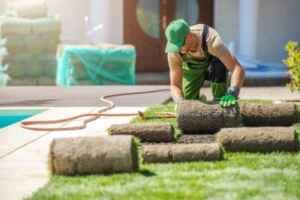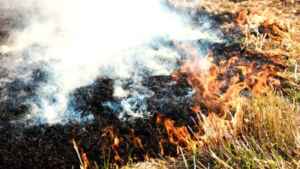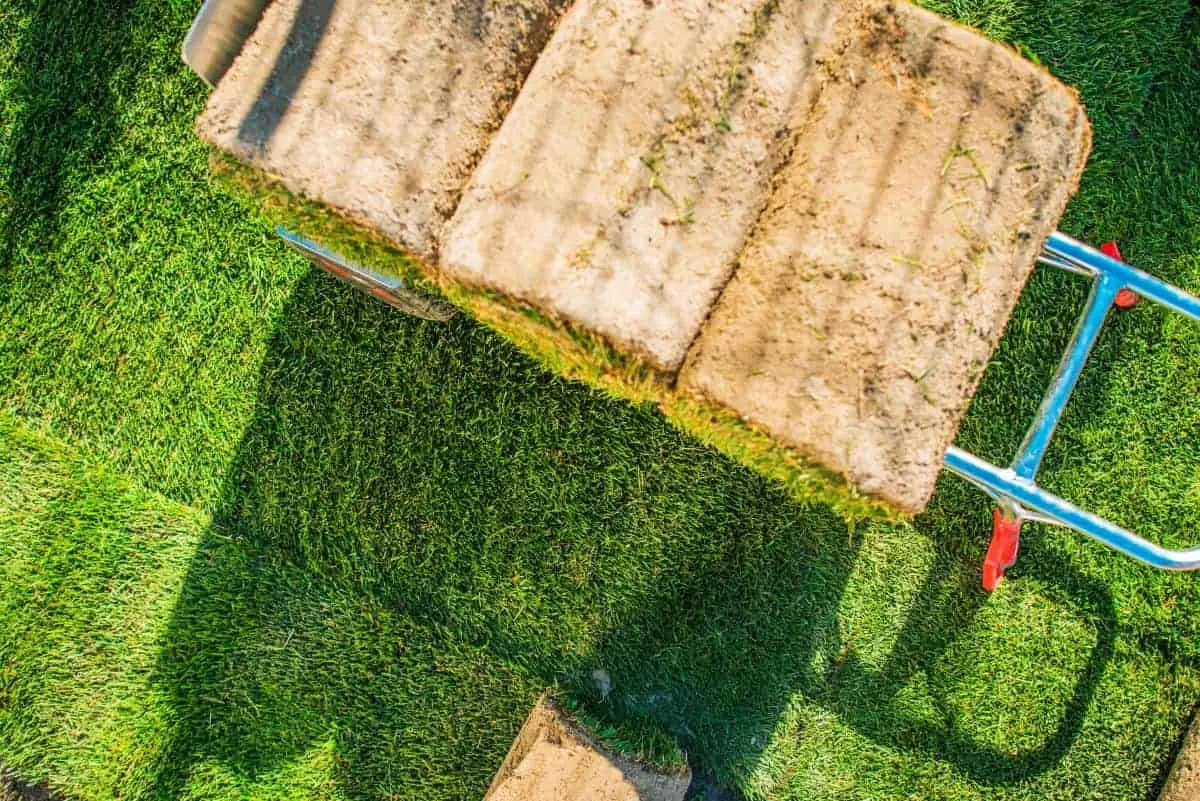Mowing New Grass: What You Should Know
Mowing grass too soon can damage it. When grass becomes stressed from mowing at the wrong time, it may never recover and the resulting lawn will be full of weeds.
So, what happens if I mow new grass too soon? After further research, a healthy lawn usually needs to be cut only once a week during the growing season. Cutting too often not only deprives grass blades of needed rest periods but also encourages them to go to seed early.
More specifically, early mowing could do the following: cause winter injuries, disease problems, affect color retention, cause scalping, reduce root growth, reduce turf yields, affect wear tolerance, cause flammability, remove food sources for animals and reduce the ability to trap sediments.
As we start this season of mowing lawns and caring for turfgrass, I would like to share some information that may help you with future grass-cutting decisions.
 Top Reasons NOT To Mow Your Lawn Too Early
Top Reasons NOT To Mow Your Lawn Too Early
Here are some of the top reasons not to mow your new lawn too early:
Winter Injury
Turfgrasses are slow-growing, cool-season annuals that require 55-60 days of consecutive temperatures below 50 degrees F to induce dormancy and reach the safe stage for cold hardiness.
As the first mowing is often done before there has been adequate time for all but the most vigorous cultivars of turfgrass to develop dormancy, spring mowing often leaves the turfgrass exposed to soil heaving and winter injury.
Disease Problems
Early-season mowing before lawns have reached safe stages of cold hardiness may result in serious disease problems.
Two such diseases are brown patches and dollar spot. Early-season mowing may increase disease susceptibility.
Color Retention and Turfgrass Quality
A major concern of early mowing is the possible effect it will have on color retention and turfgrass quality following a long, hot summer.
In times of drought, reduced leaf tissue from frequent stress may result in thinning turf. Without deep roots to supply water to the plant, grasses go into autumn stressed and are more likely to winter kill.
Scalping
Early mowing often leads to scalping of the turfgrass which damages leaf tissue and trims off growing points thereby slowing the recovery of turfgrass plants.
Scalping also creates a barrier that further retards water penetration into the soil, which can lead to greater drought stress or desiccation injury.
Studies done at Ohio State University indicate that early mowing can lead to increased summer temperatures greater than 4 degrees F on the soil surface, which in turn may contribute to heat stress.
Reduces Root Growth
Early-season mowing reduces root growth of turfgrass which limits turfgrass tolerance of dry periods later in the growing season.
Reduced root development also makes turf more vulnerable to soil-borne diseases such as Pythium and Fusarium.
Reduce Turf Yields
Early mowing can reduce turf yields, resulting in a smaller root mass for the same amount of water applied during irrigation, which may result in increased drought stress by limiting the ability of roots to take up water.
However, under circumstances of high fertility or excessive water, increased mowing can increase yield. In these cases, the root mass is simply too large for the amount of moisture available.
Wear Tolerance
Early mowing may reduce turfgrass wear tolerance and plays a role in increasing injury to newly seeded cool-season grasses that require a minimum 4-inch height for a good cover.
Growing points on newly seeded turfgrass are within 1 inch of the soil surface, and these young seedlings can be damaged or killed by mowing too early.
 Flammable
Flammable
Another concern with early mowing is that it may cause turf to become more flammable, in some cases increasing the potential for fire in grasslands or grassy areas.
Also, early mowing may increase the potential for airborne pollen production from some turfgrass plants, which could aggravate asthma symptoms in some individuals.
Loss of Food Sources
Early mowing by homeowners can contribute to a significant loss of our wildlife food sources as many birds and small mammals rely on these plants as an important source of winter food.
Reduce Ability To Trap Sediments
Early mowing may reduce the ability of the turf to trap sediments and sediment-bound phosphorus which could pollute our waterways, especially during heavy spring rains or snowmelt.
As you can see there are many reasons not to cut grass early in the season. If your lawn is still dormant due to colder temperatures or shorter day length, please wait until it greens up before you mow. Your lawn will thank you for the extra time it gets to grow.
Instructions for Mowing New Grass
When mowing, make sure the blade is sharp. Sharp blades create clean cuts that heal quickly and keep grass looking good for a longer period.
Newly seeded or sodded grass will not withstand regular mowing for at least two weeks, maybe longer. Mow new grass to the height of its first leaf blade (often about 1-1/2 to 2 inches high).
Under normal conditions, this should give you enough time to recover from your festival weekend and get caught up on your mowing. If you are in a hurry to play on the lawn after new grass installation, one option is to seek out temporary line marking paint at any local hardware store.
Using this will keep people off of the grass until it has had time to recover from being trampled by festival-goers. The best advice is to try and use common sense.
There are few things more upsetting for a homeowner than seeing the new grass they worked so hard to install being cut before it has had time to establish itself. While waiting two weeks can seem like an eternity, the maintenance will be worth it in the end when you have lush green grass that looks great all summer long!
Grass Survey of Boise, ID
Results of research conducted in Boise, Idaho have shown that allowing the grass to go dormant is more beneficial for both fertility and control.
If you mow when the grass is actively growing, it stimulates growth which reduces the number of flowers produced, reducing seed production. If allowed to grow tall before cutting, the majority of the grass will be reduced as opposed to just the tips which will be new growth.
Also, seed heads on some grasses such as orchardgrass and timothy can stay on throughout late summer and fall even if cut several times. “There’s no benefit in mowing early,” says Ken Ferrie of Washington State University (WSU). “It’s better to let it get tall, cut it off, and then topdress.“
Grass should be allowed to grow six inches tall before mowing. It is good for the lawn because it allows more of the plant to photosynthesize. Grass that has grown tall has lower numbers of flowers which reduces seed production that could turn into invasive plants.
 Research from Turfgrass Professor
Research from Turfgrass Professor
For many, summertime means cutting the grass. Shortly after Memorial Day weekend, lawns start to grow and homeowners may feel they need to mow. However, some experts urge caution before hitting the gas on that lawnmower.
Phil Hawksworth, a professor of turfgrass science at Purdue University, says it’s best to wait at least two weeks into summer before mowing.
“Grass cuttings that are left on the surface of the soil will break down rapidly, returning nitrogen and other nutrients to the soil,” Hawksworth said. “If you mow too early, your grass will not have grown enough to allow the roots to reach deep into the soil, making it more susceptible to drought. If you mow too early, you can end up with some bare or thin areas in your lawn.“
Hawksworth said that if homeowners are experiencing trouble growing healthy turfgrass around their home, they should contact their local county extension agent or Purdue agronomist. These experts can make customized recommendations to improve the health of the lawn.
“Turfgrass weeds are low growing plants that compete with turfgrass for nutrients, water, and sunlight,” Hawksworth said. “A healthy dense turfgrass stand will outcompete most weeds.”
Hawksworth said it is important to have a thick stand of turfgrass if homeowners want to keep their lawns weed-free. “To have a healthy, full-growing lawn, the grass needs to be about three inches tall,” he said. “This way, you can mow it before it gets any taller,” Hawksworth said homeowners should only mow the lawn when the grass is dry. “Never mow wet or damp grass, as this will clump up in clumps of grass,” he said.
Weather Effects
Green, lush yards even when it’s hot outdoors: The heat of summer is when Bermuda grass lawns start to turn brown. By keeping your grass healthy, it can continue growing lush and green while other lawns are turning brown due to the heat.
 In Conclusion
In Conclusion
In summary, there are quite a few reasons to not mow too early. Early mowing can cause injury to new grass by removing the leaf blades. A lawn needs three things to establish itself – sunlight, water, and nutrients. The roots are not deep enough nor is there sufficient root mass for these elements to be available at this time of year.
By delaying mowing until after initial cutting has taken place you will be giving the lawn every opportunity to establish itself. There is also a second benefit as new grass is stronger and less likely to be damaged or discolored by mower blades which can happen if it is cut too soon.

